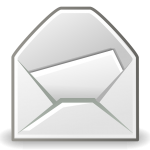 When it comes to digital strategy for your radio station, it can be overwhelming. There are so many things that your station can be doing, from search engine optimization to podcasting, that sometimes it’s tough to know where to start. It can feel like boiling an ocean or eating an elephant or [insert cliché here]. Instead of getting discouraged, it’s best to break it down into small steps. Let’s begin 2019 by doing just that.
When it comes to digital strategy for your radio station, it can be overwhelming. There are so many things that your station can be doing, from search engine optimization to podcasting, that sometimes it’s tough to know where to start. It can feel like boiling an ocean or eating an elephant or [insert cliché here]. Instead of getting discouraged, it’s best to break it down into small steps. Let’s begin 2019 by doing just that.
I recognize that every radio station is in a different situation. As you review the list below, you may find things on it that you’re already doing exceptionally well, while there are others that you haven’t given any thought to. My goal is to give you some semblance of order: What should you focus on next to move your station’s digital strategy forward?
Start here:
Website
- If you haven’t already done so, explicitly identify the goals of your radio station’s website. Get buy-in on these goals from everybody in the building — from the GM to the sales staff to the DJs.
- Once you’ve identified the goals, look for ways to drive website visitors towards those goals. For example, if you’ve designated “collecting email addresses” as a goal of the website, identify all of the places where you might be able to do this on the site. Modify the website accordingly.
- Next, run a usability test to see how real people interact with your station’s website. Address any issues that this test reveals.
- Once you’ve run a usability test, install Google Analytics on your website so you can track how people use it. But don’t just install Google Analytics; put in place a system for reviewing and discussing the analytics on a regular basis, such as a weekly website meeting.
- Now that you’re tracking the website’s performance, focus on increasing traffic. To do this, you will need to regularly publish new website content. Launch a website blog. Start with modest goals for the blog: one new blogpost a week. Here are some ideas for topics.
- As you hit your blogging goals, gradually raise the bar: two blogposts per week, then three, then one every day. Once your station is producing the desired quantity of blogposts, turn your attention to the quality. Continue to monitor your Google Analytics as you publish more content; you should see the website traffic grow.
Email Marketing
 Once your website is driving “conversions” by steering people towards the goals you’ve identified, and you’re regularly publishing new website content, it’s time to turn your attention to email marketing. It may not be as sexy as social media, but it’s tried and true and not subject to the whims of Mark Zuckerberg, so it takes priority. If you don’t have an email database, set one up with an email service provider.
Once your website is driving “conversions” by steering people towards the goals you’ve identified, and you’re regularly publishing new website content, it’s time to turn your attention to email marketing. It may not be as sexy as social media, but it’s tried and true and not subject to the whims of Mark Zuckerberg, so it takes priority. If you don’t have an email database, set one up with an email service provider.- Assuming that “collecting email addresses” was one of the website goals that you identified above (spoiler alert: it should be), then you should have already identified all of the places on your website where you can ask visitors for the email addresses. If you haven’t done that already, do it now. Make sure that you clearly tell people (a) what you will be sending them in these emails and (b) how often you will be sending these emails.
- Your staff doesn’t have time to compose every email by hand, so set up an automatic email campaign that sends a blast out when you publish new content to your website. You can do this using your email service provider’s RSS-to-email campaign.
- Once you’re set up to email regularly, monitor your email marketing performance. Here are the key numbers that you want to track.
- Got the automatic email campaign under control? Great! The next step is to set up targeted automatic email campaigns so you’re only sending people the most relevant information. After all, one listener may want the concert list while another may be more interested in the playlist for the local music show.
Social Media
 Once your email marketing game is top-notch, it’s time to turn your attention to social media. First things first, if your station doesn’t have a social media policy, write one to keep your staff out of trouble. If you already have one, review it with everybody. Update it if necessary.
Once your email marketing game is top-notch, it’s time to turn your attention to social media. First things first, if your station doesn’t have a social media policy, write one to keep your staff out of trouble. If you already have one, review it with everybody. Update it if necessary.- The primary goal of social media should be to drive people back to your station’s website where they can accomplish the goals you identified above. This means that while likes and comments are nice, the most important number to track is the number of people who click on a link to the content that you’re publishing. Track this in Google Analytics, not your social network dashboards. If you’ve carved out time to review your Google analytics regularly as discussed above, you should already be tracking this.
- To drive traffic to your website from social media, you will want to proactively share your website content on social networks. While automatic email campaigns can save a lot of time, I’m not a big fan of auto-posting website content to social media. A defter human touch goes a long way here. Develop a plan for pro-actively sharing your website content after its published.
- If your station only shares its own content, it can appear promotional and self-serving. Share a mix of content from your own website and other sources in your market. The 4-1-1 Rule is a good rule of thumb for this. Identify influencers (journalists, bloggers, etc.) in your market who produce content and start sharing that as well.
- Once you’ve gotten in the habit of sharing content from these influencers, begin to interact with them in other ways on social media. Follow them, retweet them, comment on their posts, and just generally engage with them.
- You may want to focus on the above steps with one social network at a time. Start with Facebook. When you’ve mastered that, move to Twitter. Next, focus on Instagram or YouTube. It’s easy to get overwhelmed by taking on too much at once; break everything down into manageable, bite-sized chunks and you won’t get discouraged.
Of course, there are a lot of places to go from here, including streaming, mobile apps, and smart speaker skills. But before you ski down the black diamond digital paths, make sure that you’ve got the basics above in order. Hopefully, this will provide your station with a good road map for the new year.
More Digital Tips
- On Your Radio Station Website, Use Language That Puts Listeners First
- 7 Common Mistakes Radio Stations Make With Their Email Marketing
- 7 Ways to Strengthen the Calls to Action On Your Radio Station’s Website
- 6 Podcasts Every Radio Broadcaster Should Listen To
- How to Replace Multiple “Subscribe” Links with a Single “Listen Now” Button on Your Podcast Webpage
- A Simple Digital Treat to Thank Your Radio Listeners This Thanksgiving - November 13, 2023
- Interview Questions When Hiring Your Radio Station’s Next Digital Marketing Manager - November 6, 2023
- A Radio Conversation with ChatGPT: Part 2 – Promotions - October 30, 2023





Leave a Reply